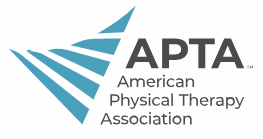APTA Annual Conference Abstracts
PT 2010: The Annual Conference and Exposition of the APTA, June 16 - 19, 2010
Efficacy of Threshold-Based Inspiratory Muscle Training in Chronic Obstructive Pulmonary Disease: A Systematic Review (110-RR)
EFFICACY OF THRESHOLD-BASED INSPIRATORY MUSCLE TRAINING IN CHRONIC OBSTRUCTIVE PULMONARY DISEASE: A SYSTEMATIC REVIEW
Robert Dekerlegand
*1, Magdalena Buczek
1, Jeremy Martinsen
1, Lauren Rhoades
1, Jessica Streater
1, Mary Jane Myslinski
2, Jennifer Garris
1
1. Rehabilitation and Movement Sciences, University of Medicine and Dentistry of New Jersey - School of Health Related Professions; 2. Rehabilitation and Movement Sciences, University of Medicine and Dentistry of New Jersey - School of Health Related Professions
PURPOSE: The purpose of this systematic review is to determine the ability of threshold-based inspiratory muscle training (T-IMT) to enhance respiratory muscle function (RMF), alleviate dyspnea, increase exercise capacity, and improve quality of life (QOL), in individuals with chronic obstructive pulmonary disease (COPD).
BACKGROUNDS/SIGNIFICANCE: COPD is characterized by chronic airway inflammation and obstruction leading to a progressive decline in pulmonary function. The multi-faceted effects of this disease can result in an imbalance between the capacity of the respiratory muscles and the overall work of breathing. Hyperinflation, inadequate nutrition, effects of medications, and inflammatory mediators can impair respiratory muscle function. Airway damage, chronic obstruction, and hyperinflation limit the processes of ventilation and respiration resulting in an increased work of breathing. This imbalance is associated with increased dyspnea, poor exercise capacity, and can impair QOL. Specific respiratory muscle training has been shown to improve RMF through a variety of training modes. T-IMT appears to be clinically advantageous in its ability to control the load applied to the inspiratory muscles. Numerous reviews exist evaluating the ability to train the respiratory muscles in COPD; however no review specifically addresses the efficacy of T-IMT alone. A review of this specific mode of respiratory muscle training will enable rehabilitation professionals to make evidence-based decisions when considering this intervention for individuals with COPD.
SUBJECTS: Not Applicable.
METHODS AND MATERIALS: The Medline (1950-present) and CINAHL (1982-present) databases were searched between September 2008 and September 2009 through the OVID search engine. Experimental and quasi-experimental research studies published in the English language evaluating T-IMT alone in individuals with COPD were included in the final review. Articles comparing T-IMT to aerobic conditioning were excluded.
ANALYSES: The quality of literature was determined using the MacDermid Quality Checklist, which assigns a score of 0 - 48 based on the study design. A score of 48 represents the highest quality. Two separate reviewers evaluated each article meeting the inclusion criteria. Discrepancies between the ratings of the two reviewers were discussed and rectified.
RESULTS: Twelve articles published between 1988 and 2008 met the inclusion criteria and were analyzed in the final review. The mean quality score based on the MacDermid scale was 33.5 (range = 27 - 40). Considerable variation existed in the training protocols used across the studies. The majority of subjects presented with moderate to severe airway obstruction. Intensity of training ranged from 30 - 60% of maximal inspiratory pressure (MIP) with two articles using the “highest tolerable load”. No adverse events were reported. T-IMT consistently improved measures of respiratory muscle strength and endurance. Myogenic training effects of the external intercostals have been demonstrated with only 5 weeks of training at 60% MIP. T-IMT did not improve maximal exercise capacity but may decrease the ventilatory demand during exercise. The transference of training from T-IMT to functional measures was positive but inconsistent; however, a beneficial effect on dyspnea perception and quality of life was demonstrated. The potential for T-IMT to decrease the number of inpatient hospital days and physician visits over one-year of training was presented. The benefits of T-IMT diminish upon cessation of the intervention.
CONCLUSIONS: The literature supports the use of T-IMT to increase both RMS and RME in individuals with moderate to severe COPD. These benefits appear to improve QOL through the alleviation of dyspnea and may decrease physician visits and length of hospital admissions. Potential ergogenic effects of T-IMT include increased functional capacity and improved ventilatory efficiency, though additional research is needed. T-IMT did not improve pulmonary function or maximal exercise capacity. The basic principles of exercise prescription apply to T-IMT. The ideal intensity appears to be between 40 - 60% MIP though some individuals may respond to a lower training stimulus. Training sessions should last 30 minutes with a frequency of 6 days per week. Improvements in RMF can be seen in as little as 5-weeks when training at 60% MIP. A longer training period may be required with lower intensities and for the benefits to transfer to function, dyspnea and QOL. Further research is needed to identify patients that would benefit most from T-IMT based on their characteristics and to refine the optimal protocol.
FUNDING SOURCE: None.
KEYWORDS: COPD, Inspiratory muscle training, Inspiratory muscle strength


